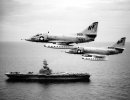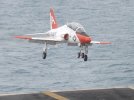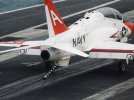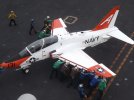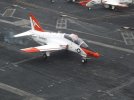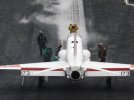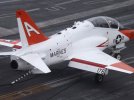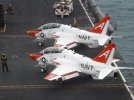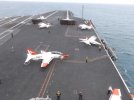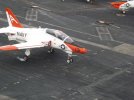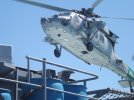The reason asymmetric shots are so hard is because the end speed charts are computed assuming an engine failure of the critical engine on the cat stroke. The jet has to have enough speed to maintain Vmca and fly away. Just as an example, a 67,000 pound fully laden tanker shoots at a CSV setting of around 210. A 58K asym 3 Rhino will shoot in the 270ish range. All of this is subject to my recall of penguins that have long since abandoned the iceberg.
Edit - for those of you clown jet studs who are interested, it shoots with a CSV around 90-100. 100 is also the no load setting just for reference.


 Ugh!
Ugh!